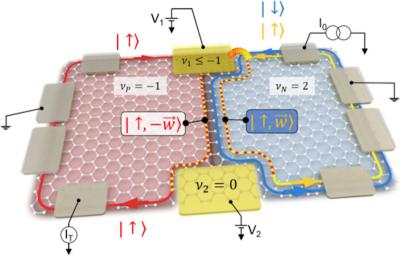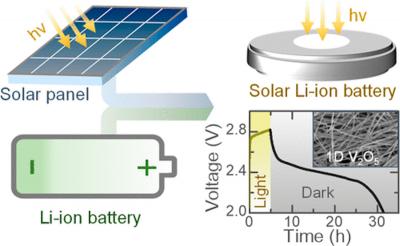The Graphene-Info weekly newsletter
Published: Tue, 04/27/21
HexagonFab raises £1.9 million to accelerate development of its graphene-based 'Bolt’ system for protein characterization
UK-based developer of graphene-based biological sensors, HexagonFab, recently raised £1.9 million to accelerate development of its novel technology for process monitoring in the biopharmaceutical industry.
The company has developed a portable and affordable instrument – HexagonFab Bolt – which can very rapidly generate biopharma data.
Researchers gain insights into the wettability of graphene
A research team at the Center for Molecular Spectroscopy and Dynamics (CMSD) within the Institute for Basic Science (IBS) in Seoul, South Korea, and the Korea University, recently revealed the origin of the wettability of graphene. Wettability is the ability of the interfacial water to maintain contact with a solid surface, and it depends on the material's hydrophobicity. Unlike most materials, the wettability of graphene varies depending on the type of substrate. More specifically, the wettability of the substrate is weakly affected by the presence of a single graphene layer on its surface. Such a peculiar wettability of graphene has been described by the term "wetting transparency" because the wetting properties at the graphene-water interface have little effect on the substrate-water interaction through the thin graphene.

In their new work, the team succeeded at observing the hydrogen-bond structure of water molecules at graphene-water interfaces using a technique called 'vibrational sum-frequency generation spectroscopy (VSFG)'. VSFG is a second-order nonlinear spectroscopy that can be used to selectively analyze molecules with broken centrosymmetry. It is an ideal method for studying the behavior and structures of water molecules at the graphene interface since the water molecules in the bulk liquid are not visible due to their isotropic distribution of molecular orientations.
Researchers develop a 3D motion tracking system with graphene transparent photodetectors
Researchers at the University of Michigan (U-M) have developed a real-time, 3D motion tracking system developed that combines transparent light detectors with advanced neural network methods. The system could one day replace LiDAR and cameras in autonomous technologies and future applications include automated manufacturing, biomedical imaging and autonomous driving.
![]()
The imaging system relies on transparent, highly sensitive graphene photodetectors developed by Zhaohui Zhong, U-M associate professor of electrical and computer engineering, and his group. They’re believed to be the first of their kind.
Researchers design a graphene-based tunable beam splitter
Researchers from France, South Korea, and Japan have created a graphene-based “beam splitter” for electronic currents. The tunable device’s operation is directly comparable to that of an optical interferometer. The team believes that the technology could enable electron interferometry to be used in nanotechnology and quantum computing. Quantum Hall valley splitter - schematic representation of the p − n junction. Image from article
Quantum Hall valley splitter - schematic representation of the p − n junction. Image from article
An optical interferometer splits a beam of light in two, sending each beam along a different path before recombining the beams at a detector. The measured interference of the beams at the detector can be used to detect tiny differences in the lengths of the two paths. Recently, physicists have become interested in doing a similar thing with currents of electrons in solid-state devices, taking advantage of the fact that electrons behave similarly to waves in the quantum world.
Cambridge team designs GO-enhanced light rechargeable Lithium-Ion batteries
University of Cambridge researchers have designed a lithium-ion battery that can be directly charged in sunlight. This was done in an effort to improve the general process of connecting solar panels to batteries to store energy when the sun is shining.

“The idea is to simplify how solar energy is harvested and stored,” says Michael De Volder, a mechanical engineer at the University of Cambridge who led the work. If the team can improve the efficiency and lifetime of the hybrid device, its cost will likely be lower than combining solar cells and batteries. “For the price of a battery, you get both functionalities,” he says.
GMG, The University of Queensland Research & UniQuest join forces on graphene-enhanced aluminum-ion battery development project
Australia-based Graphene Manufacturing Group (GMG), which became a public company earlier this month, has announced the execution of a research agreement with the University of Queensland’s Australian Institute for Bioengineering and Nanotechnology (“AIBN”) for the development of graphene aluminum-ion batteries .
Under the agreement, GMG will manufacture commercial battery prototypes for watches, phones, laptops, electric vehicles and grid storage with technology developed at the University of Queensland (“UQ”). GMG has also signed a license agreement with Uniquest, the University of Queensland's commercialization company, which provides GMG exclusive license of the technology for battery cathodes.
Anaphite raises £1.2 million to push forward graphene-enhanced li-ion batteries development
Anaphite, a UK-based company that was founded to explore ways to incorporate graphene into Li-ion batteries to improve battery life and charging times, has raised about £1.2 million (over USD$1,665,000) from investors in a new funding round.
The funding round was led by Zero Carbon Capital, which is investing £300,000. Zero Carbon Capital backs UK-based hard-science start-ups on a mission to address the toughest problems of climate change.




